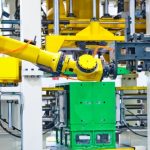Increasingly, industrial sites face the dual challenges of labor shortages and the demand for efficient, secure operations. Against this backdrop, the ANYbotics Industry Forum 2025 served as a focal point for over 70 customers and partners exploring advances in robotic inspection and the role of data-driven intelligence. Instead of centering on hardware capabilities, participants considered how integrating robots like ANYbotics’ ANYmal with human expertise is changing daily workflows, decision-making processes, and operational resilience. The focus now rests not only on minimizing safety risks but also on harnessing accurate, contextual data to unlock meaningful insights.
Interest in autonomous mobile robots in industrial settings has consistently grown over recent years. Earlier discussions largely revolved around technical feasibility—ensuring that machines could safely and reliably navigate complex environments. Recent coverage acknowledges that, while initial deployments highlighted functional achievements, the narrative has expanded to encompass value creation, data management strategies, and user acceptance. Reports from the metals industry and collaborative projects with SAP showcase quantifiable benefits in both safety and productivity, confirming trends of broader adoption and ecosystem partnerships reported in previous industry updates.
What Changes with Industry 5.0 Integration?
The shift toward Industry 5.0 centers on combining the strengths of humans and intelligent technologies, moving beyond the limitations of automated systems alone. Robots like ANYmal are now deployed to handle repetitive and hazardous tasks, prioritizing precision and frequency, while humans focus on nuanced assessment and strategy. This transition brings both opportunity and challenge, as employees redefine their identity and develop new skills for working alongside advanced robotic systems. Zac Kimbrough of Constellium captured this shift succinctly during the forum:
“People are the biggest danger to my robots.”
Does Data Quality Surpass Data Quantity?
As industrial operations amass more data from deployed robots, the quality and contextual relevance of information take precedence over sheer volume. ANYmal provides actionable insights, allowing for root-cause analysis and more predictive maintenance approaches. Plant operators now recognize that strategic sensor placement and mobile platforms can yield more reliable intelligence, emphasizing that actionable outcomes are paramount. A customer using ANYmal in thermal inspections demonstrated cost savings and enhanced safety, reinforcing the case for informed, data-driven operations.
How Do Partnerships Drive Autonomous Operations?
The complexity of industrial inspection drives companies toward collaborative solutions. ANYbotics integrates its robots and data platforms with enterprise solutions from organizations like SAP, expanding possibilities for automated maintenance and workflow management. Pilot projects, such as Project Embodied AI, have shown significant reductions in downtime and operational errors, demonstrating the gains from interconnected digital ecosystems. ANYbotics expressed its commitment to this approach, stating,
“We are deepening our collaboration with the industry to continuously expand use cases and reliable integrations.”
Beyond the technical achievements, choosing the right balance between automation and human involvement becomes critical for sustaining momentum in digitalized industries. By designing new plants that integrate mobile robotics from inception and by emphasizing actionable intelligence over raw data, companies can better anticipate equipment failures, streamline maintenance, and protect their workforce. As adoption grows, ongoing collaboration—between technology providers, operational leadership, and workers—will define the true success of intelligent robots in industry.
Readers interested in deploying AMRs or integrating advanced inspection robotics need to prioritize clarity of goals, value in intelligence, and openness to ecosystem partnerships. Selecting flexible solutions that support both workflow optimization and human acceptance is likely to yield the most robust outcomes in safety and operational efficiency. The progression seen at the ANYbotics Industry Forum underlines the importance of continuous dialogue, learning, and adaptation for organizations seeking to remain competitive and responsive to the demands of modern industrial environments.










